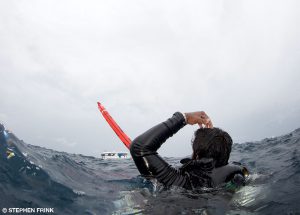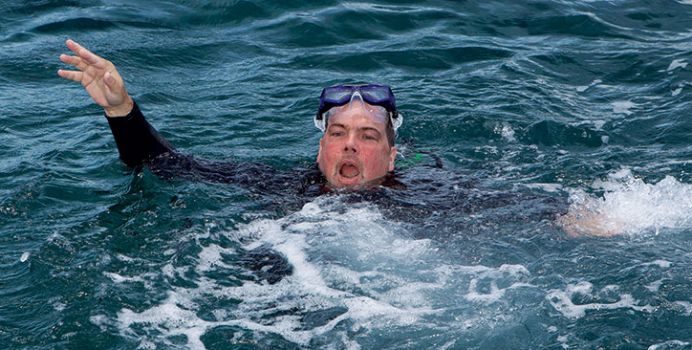Times like these really illustrate how well-thought-out emergency action plans (EAPs) can improve our safety (and the safety of our loved ones) both in the water and on land. Crafting these plans involves careful evaluation of the activity, location, and available resources, and it must be done well in advance of diving or travel.  Take the time now to plan ahead for your dive season; here’s what you need to consider when putting together an EAP for yourself or your students.
Take the time now to plan ahead for your dive season; here’s what you need to consider when putting together an EAP for yourself or your students.
Preparedness
Accidents happen, and no matter how well you prepare, it’s impossible to completely eliminate risk. Unexpected student injuries, deterioration of dive site conditions, and countless other factors can elevate the risk of an injury or emergency.
As NAUI professionals, you have a good grasp of what first aid training it is important to have. You’ve taken courses, perhaps including NAUI/DAN first aid courses, as you’ve progressed through the NAUI curriculum, but unused skills are quickly lost. Take the time to go over your training materials and consider what refresher courses might be useful. No diver should be without basic life support skills and oxygen administration fundamentals. Likewise, the ability to make quick, sound decisions about transportation or evacuation of an injured diver can make the difference between a fatality and a serious injury in a remote location.
 Responding to serious injuries is impossible without the right equipment, which is why a first aid kit and oxygen unit are essential elements of an EAP. Whether you bring these with you or verify that the dive site has them ready to use is up to you, but they’re critical to your response plan. Be sure to keep a list of pertinent medical considerations for yourself and your group available with you or your first aid kit. Allergies, relevant medical conditions, and emergency contacts need to be easily accessible, and their location should be known to multiple people in case you are unavailable or injured when an incident occurs.
Responding to serious injuries is impossible without the right equipment, which is why a first aid kit and oxygen unit are essential elements of an EAP. Whether you bring these with you or verify that the dive site has them ready to use is up to you, but they’re critical to your response plan. Be sure to keep a list of pertinent medical considerations for yourself and your group available with you or your first aid kit. Allergies, relevant medical conditions, and emergency contacts need to be easily accessible, and their location should be known to multiple people in case you are unavailable or injured when an incident occurs.
Putting Plans into Action
EAPs must be unique to your specific activity and your group, so it would be impossible for us to provide one for you. Instead, you must take into consideration every relevant factor that could contribute to your group’s risk and create a plan for an effective response. This can be broken down into five steps to make the process easier to digest:
1) Scene Management
Emergency situations have the potential to cause chaos and make even trained rescuers panic. Have tasks preassigned to specific individuals so they can default to their most effective mode of response. This avoids delaying a rescue by having to assign roles in real time. Determine who will provide care to the injured, who will call for emergency services, and who will secure equipment and manage bystanders or other group members. Make sure you’ve accounted for everyone; it’s easy to lose track of divers in the water while providing aid to a diver in distress.
2) Patient Care
Your safety and that of your colleagues and bystanders should come first in any emergency. You can make an incident worse by creating a second victim, even if you begin a rescue with the best of intentions. Take the time to don personal protective equipment and ensure that the area is safe for rescuers before evaluating the patient’s condition.
3) Communication and Logistics
Effective communication and management can make an enormous difference in the effectiveness of a response and rescuers’ stress levels. Designate a single person to manage communication between caregivers, emergency services, and DAN.
4) Documentation
Documenting everything that happens can provide emergency services with valuable data about the injured person’s condition as well as providing legal protection for all involved after the fact. Never overlook the importance of timely and accurate documentation during an emergency response.
5) Debriefing
Immediately after an incident there must be a full debriefing with everyone who was present. This allows for a check-in on the mental and physical condition of the rescuers and creates a more complete picture of the incident to be recorded. This data may be valuable for the injured person’s treatment, the protection of rescuers, the improvement of systems, and the prevention of future incidents.
Putting together an EAP can be a daunting task, but by working through these steps, it should be both manageable and educational. Take this time to prepare yourself and your peers for the dive season ahead, and remember that DAN is always available for education and advice when you need it most.
For more information about crafting effective emergency action plans, visit DAN.org/HIRA.


